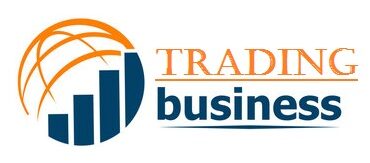In an ever-evolving business landscape, the demand for increased productivity, streamlined operations, and cost savings has never been more pronounced.
Enter business management consultants: experts who bring a bird’s-eye view and specialized knowledge to the table, helping organizations navigate through complexities and challenges.
Their primary goal? To optimize operations, ensuring businesses run like well-oiled machines, meeting both short-term objectives and long-term visions.
So in this blog post, let’s delve into the intricate process of optimization, showcasing the steps and strategies employed by these consultants to elevate businesses to their peak efficiency.
Whether you’re a business owner seeking insights or an aspiring consultant aiming to hone your craft, the following ideas offer a comprehensive view of the world of process optimization in the realm of business management.
Understanding the business landscape
Before diving headfirst into the world of process optimization, it’s important to first grasp the nuances of a company’s existing operations, its ingrained culture, and its overarching objectives.
Like a doctor diagnosing a patient, a business management consultant must first understand the anatomy and health of a business before suggesting treatments. Here is how they do that:
- Current operations analysis: This entails a deep dive into the business’s day-to-day functions. By understanding how things currently operate, consultants can pinpoint inefficiencies, areas of wastage, and potential bottlenecks that might be hindering performance.
- Company culture assessment: Beyond just operations, intangible aspects like company culture play a significant role in how processes are executed. A business might have the best systems in place, but if its culture does not support change or innovation, the implementation of new strategies might face resistance.
- Objective alignment: It’s crucial to align any process optimization with the company’s strategic objectives. For instance, if a business aims for rapid expansion, then processes need to be scalable. If the goal is sustainability, then long-term, eco-friendly processes should be emphasized. Understanding a company’s goals ensures that optimization doesn’t just make processes faster or cheaper, but also more aligned with the company’s future vision.
By firmly rooting their strategies in the real, on-ground realities of the business landscape, consultants can ensure that their recommendations are not just theoretically sound, but practically implementable and effective in driving tangible improvements.
After all, a business isn’t just a set of processes — it’s a complex ecosystem of goals, people, and operations, all intricately linked.
Process mapping and visualization
It’s one thing to know the processes in theory, but being able to visualize them paints a clearer picture of how operations flow, where they might be stumbling, and how they can be enhanced. This is why the next step for many business management consultants is process mapping and documentation.
Process mapping is a graphical representation of all the steps involved in a process. From the initiation of a task to its conclusion, everything is mapped out in a clear and concise manner. This not only helps consultants in understanding the current workflow but also identifies areas where there might be redundancies, inefficiencies, or bottlenecks.
But it doesn’t end there. Once processes are mapped, it’s vital to document them meticulously. Proper documentation serves multiple purposes:
- Reference point: A well-documented process acts as a guidebook for employees, ensuring everyone is on the same page and understands the process in its entirety.
- Training tool: For new employees or for cross-training purposes, this documentation acts as a tutorial, helping in faster onboarding.
- Evaluation: With clear documentation in hand, it’s easier to review and assess processes periodically, ensuring they remain relevant and efficient over time.
More importantly, through mapping and documentation, consultants often realize that some steps, which might have been crucial at one point, have become obsolete or redundant. By identifying and eliminating these, efficiency can be significantly improved.
What’s more, with clear maps and documents on hand, processes can be standardized across departments or even branches. This ensures consistency in operations, which in turn can lead to consistent quality in outputs.
Lean and Six Sigma approaches
So far, our consultant has understood the theory behind your business operations and has mapped out the various processes that keep it running. What’s next? Lean and Six Sigma approaches.
These are two methodologies that stand out for their proven effectiveness and widespread adoption, and a good business management consultant (like one from The Norfus Firm, PLLC) can help you implement them.
Here’s a breakdown of each approach and their pivotal role in efficiency optimization:
Lean methodology: focus on waste reduction
- Origin and philosophy: Stemming from the Toyota Production System, the Lean methodology emphasizes the elimination of waste in business processes. Waste, in this context, refers to any step or resource in a process that doesn’t add value to the end product or service from the customer’s perspective.
- Key principles: Lean operates on principles such as continuous improvement, respect for people, and standardizing work for consistency.
- Tools and techniques: Techniques like Value Stream Mapping, 5S (Sort, Set in order, Shine, Standardize, Sustain), and Kaizen are widely employed to identify and eliminate waste under Lean. A good business management consultant will be well-versed in all of these.
Six Sigma: reducing variability and improving quality
- Origin and philosophy: Six Sigma was developed at Motorola and popularized by companies like General Electric. It focuses on reducing process variability, ensuring that products or services are delivered with consistent quality.
- DMAIC framework: Central to Six Sigma is the DMAIC framework — Define, Measure, Analyze, Improve, and Control. This structured approach guides businesses in identifying issues and implementing solutions systematically.
- Benefits: By reducing variability, a business management consultant can help you drastically cut down on defects, rework, and inefficiencies, leading to both cost savings and improved customer satisfaction.
Final words
In today’s fast-paced business world, efficiency is paramount. The Norfus Firm’s business management consultants, armed with methodologies like Lean and Six Sigma, offer the expertise to streamline operations and drive growth.
By understanding, mapping, and refining processes, they can transform your company into an agile, high-performing entity.
Remember, for businesses aiming to thrive in an ever-evolving landscape, embracing these optimization strategies isn’t just beneficial—it’s essential. As experts often say, process optimization is the linchpin of sustainable success.

